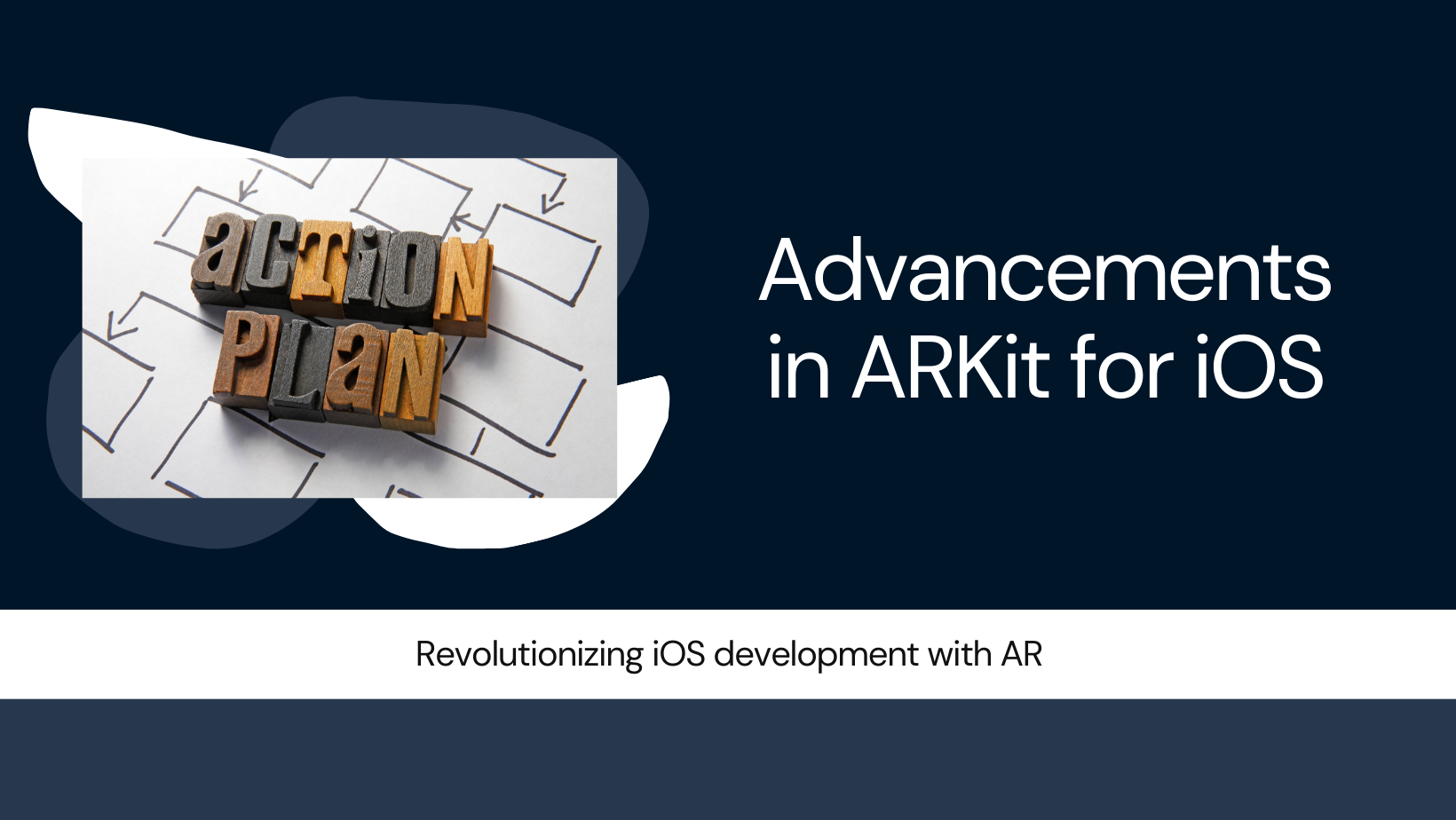Augmented Reality (AR) has been a transformative technology, merging the physical and digital worlds to create immersive experiences. Apple’s ARKit, introduced in 2017, has revolutionized AR development on iOS, making it accessible to millions of developers. As AR technology continues to evolve, the future of ARKit in iOS development promises even more groundbreaking innovations. This blog explores the potential advancements, applications, and trends shaping the future of ARKit in iOS development.
The Evolution of ARKit
Since its launch, ARKit has undergone significant updates, each adding new capabilities and enhancing existing features. From ARKit 1.0 to ARKit 6.0, Apple has continually improved the framework, introducing features like better motion tracking, environmental understanding, and realistic rendering.
- ARKit 1.0: Introduced basic motion tracking and plane detection.
- ARKit 2.0: Added shared experiences, 3D object detection, and persistent AR experiences.
- ARKit 3.0: Brought people occlusion, motion capture, and multiple face tracking.
- ARKit 4.0: Introduced Location Anchors and improved depth API.
- ARKit 5.0: Enhanced face tracking and location anchors.
- ARKit 6.0: Focused on more advanced rendering and motion capture improvements.
Enhanced Environmental Understanding
One of the critical areas of advancement for ARKit is environmental understanding. Future updates will likely enhance ARKit’s ability to recognize and interact with the physical environment. This includes improved plane detection, object recognition, and semantic understanding of scenes.
- Semantic Segmentation: ARKit will be able to better understand and differentiate between various objects and surfaces in a scene, allowing for more precise and realistic interactions.
- Advanced Object Recognition: Future iterations of ARKit may include enhanced object recognition capabilities, enabling apps to identify and interact with more complex objects and environments.
- Real-Time Environmental Mapping: With advancements in sensor technology, ARKit will likely offer real-time environmental mapping, providing a more immersive and interactive AR experience.
Improved Rendering and Visual Quality
As hardware continues to advance, ARKit will benefit from improved rendering capabilities, offering more realistic and visually stunning AR experiences. Future updates may leverage advanced rendering techniques and more powerful GPUs to deliver high-quality visuals.
- Photorealistic Rendering: ARKit will likely support more photorealistic rendering, making virtual objects indistinguishable from real-world objects.
- Advanced Lighting and Shadows: Improved lighting and shadow effects will enhance the realism of AR experiences, creating more immersive environments.
- Higher Frame Rates: With more powerful hardware, ARKit will be able to support higher frame rates, resulting in smoother and more responsive AR interactions.
Expanded Use Cases and Applications
The future of ARKit in iOS development will see an expansion of use cases across various industries. AR technology is not limited to gaming and entertainment; it has the potential to revolutionize sectors such as education, healthcare, retail, and more.
- Education: ARKit can transform the way students learn by creating interactive and engaging educational experiences. From virtual field trips to interactive anatomy lessons, the possibilities are endless.
- Healthcare: ARKit can be used in medical training, patient education, and even remote surgery. Augmented reality can provide doctors with real-time information and guidance during procedures.
- Retail: ARKit can enhance the shopping experience by allowing customers to visualize products in their homes before making a purchase. Virtual try-ons and interactive product displays are just the beginning.
- Real Estate: ARKit can provide virtual property tours, allowing potential buyers to explore homes from the comfort of their own devices.
Integration with Other Technologies
The future of ARKit will see deeper integration with other emerging technologies, such as artificial intelligence (AI), machine learning (ML), and the Internet of Things (IoT). This integration will unlock new possibilities and create more sophisticated AR experiences.
- AI and ML: By incorporating AI and ML, ARKit can offer more intelligent and context-aware AR experiences. This includes features like predictive analytics, natural language processing, and personalized content.
- IoT: Integrating ARKit with IoT devices will create a more connected and interactive environment. For example, users can visualize data from smart home devices in real-time, enhancing their control and understanding of their surroundings.
- 5G Connectivity: With the rollout of 5G networks, ARKit will benefit from faster and more reliable connectivity. This will enable real-time AR experiences with minimal latency, enhancing the overall user experience.
Developer Tools and Resources
Apple is committed to providing developers with the tools and resources they need to create innovative AR experiences. The future of ARKit will include more robust development tools, improved documentation, and enhanced support for third-party integrations.
- ARKit Development Kit: Apple will continue to improve the ARKit development kit, making it easier for developers to create, test, and deploy AR applications.
- Enhanced Documentation: Comprehensive documentation and tutorials will help developers understand and leverage ARKit’s capabilities more effectively.
- Third-Party Integrations: Apple will likely expand support for third-party frameworks and libraries, allowing developers to integrate ARKit with other technologies and platforms.
Privacy and Security
As AR experiences become more immersive and data-intensive, ensuring user privacy and security will be paramount. Apple is known for its strong stance on privacy, and future updates to ARKit will likely include enhanced security features.
- Data Privacy: ARKit will continue to prioritize user data privacy, ensuring that AR experiences do not compromise personal information.
- Secure Transactions: For AR applications involving financial transactions, ARKit will implement robust security measures to protect user data and ensure secure payments.
- User Consent: ARKit will enforce transparent user consent mechanisms, allowing users to control how their data is collected and used in AR applications.
Community and Collaboration
The AR development community is vibrant and collaborative, and the future of ARKit will be shaped by the contributions of developers worldwide. Apple will likely foster this community by providing platforms for collaboration, learning, and innovation.
- ARKit Community Forums: Apple will continue to support community forums where developers can share knowledge, troubleshoot issues, and collaborate on projects.
- Developer Conferences: Events like WWDC (Worldwide Developers Conference) will provide opportunities for developers to learn about the latest ARKit updates and network with industry experts.
- Open Source Contributions: Apple may encourage open-source contributions to ARKit, allowing developers to innovate and enhance the framework collectively.
The Impact on User Experience
Ultimately, the advancements in ARKit will have a profound impact on user experience. As AR technology becomes more sophisticated, users can expect more engaging, interactive, and meaningful experiences on their iOS devices.
- Enhanced Interactivity: ARKit will enable more interactive and intuitive AR experiences, allowing users to engage with digital content in new and exciting ways.
- Personalized Experiences: With the integration of AI and ML, ARKit will offer personalized AR experiences tailored to individual user preferences and behaviors.
- Accessibility: Future updates to ARKit will likely focus on making AR experiences more accessible to all users, including those with disabilities.
Conclusion
The future of ARKit in iOS development is bright, with endless possibilities for innovation and growth. As AR technology continues to advance, ARKit will play a pivotal role in shaping the way we interact with the digital world. From enhanced environmental understanding and improved rendering to expanded use cases and deeper integration with other technologies, ARKit is poised to revolutionize iOS app development.
Developers who embrace ARKit’s potential will be at the forefront of creating immersive and transformative experiences that captivate and engage users. As we look ahead, it’s clear that ARKit will remain a cornerstone of iOS development, driving the future of augmented reality on Apple’s platform.







